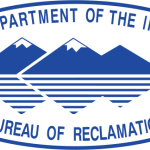- Sektör: Government
- Number of terms: 15655
- Number of blossaries: 0
- Company Profile:
A U.S. Department of the Interior agency that oversees water resource management incuding the oversight and operation of numerous diversion, delivery, and storage projects the agency has built throughout the western United States for irrigation, water supply, and attendant hydroelectric power ...
Potential loss of life or property damage downstream of a dam caused by flood waters released at the dam or by waters released by partial or complete failure of the dam. Includes effects of landslides upstream of the dam on property located around the reservoir. Potential number of lives that would be lost from a dam failure and an uncontrolled reservoir release (considers load, failure modes, and estimated population distribution warning times).
Industry:Engineering
The state regulatory agency that governs retail utility rates and practices and, in many cases, issues approvals for the construction of new generation and transmission facilities. On average, roughly 90 percent of a utility's operations are regulated by the state commission. There are regulatory commissions in all 50 states, as well as the District of Columbia, Puerto Rico, and the Virgin Islands. The state commissions vary in size from three to seven members, and most states provide that commissioners will be appointed by the state governors. In some states, commissioners are elected. The typical term of office is six years.
Industry:Engineering
The quantity of water transpired by plants or evaporated from adjacent soil surfaces in a specific time period. Usually expressed in depth of water per unit area. The combined processes of evaporation and transpiration. It can be defined as the sum of water used by vegetation and water lost by evaporation. A collective term that includes water discharged to the atmosphere as a result of evaporation from the soil and surface water and as a result of plant transpiration.
Industry:Engineering
An inclined surface usually defined by the ratio of the horizontal distance to the vertical distance, i.e. 2:1 (2 horizontal units to 1 vertical unit). Change in elevation per unit of horizontal distance. Side of a hill or a mountain. The inclined face of a cut, canal, or embankment. Inclination from the horizontal. Expressed in percent when the slope is gentle; in this case also termed gradient. Degree of deviation of a surface from the horizontal, usually expressed in percent or degrees. Sometimes referred to as batter when measured from vertical.
Industry:Engineering
The earthquake which the structure is required to safely withstand with repairable damage. Those systems and components important to safety must remain functional and/or operable. For design purposes, the intended use of this earthquake loading is for economic design of structures or components whose damage or failure would not lead to catastrophic loss. For most usage in Reclamation, the DBE is defined to have a 90% probability of nonoccurrence in a 50-year-exposure period, which is equivalent to a recurrence interval of 474 years. Economic considerations for specific projects may lead to consideration of other values.
Industry:Engineering
Drainage water from irrigated farmlands that re-enters the water system to be used further downstream. May contain dissolved salts or other materials that have been leached out of the upper layers of the soil. That portion of the water previously diverted from a stream which finds its way back to that stream or to another body of ground or surface water. The water that reaches a ground or surface water source after release from the point of use and thus becomes available for further use.
Industry:Engineering
Term designating the path of least resistance through which energy from explosions can be released. This path is usually taken to a free face or surface where rock can displace and energy can be released.
Industry:Engineering
NRT consists of representatives from several Federal agencies including the Department of the Interior (DOI) and the Bureau of Reclamation. NRT is primarily a policy board which provides program direction, planning and preparedness guidance, and review of regional response activites. NRT should be activated as an emergency response team when an oil or hazardous substance release exceeds the response capability of the region(s), transects regional boundaries; or involves a significant threat to public health or welfare or the environment, substantial amounts of property, or substantial threats to natural resources.
Industry:Engineering
Lands including swamps, marshes, bogs, and similar areas such as wet meadows, river overflows, mudflats, and natural ponds. An area characterized by periodic inundation or saturation, hydric soils, and vegetation adapted for life in saturated soil conditions. Any number of tidal and nontidal areas characterized by saturated or nearly saturated soils most of the year that form an interface between terrestrial and aquatic environments; including freshwater marshes around ponds and channels, and brackish and salt marshes. A jurisdictional wetland is subject to regulation under the Clean Water Act. A nonjurisdictional is subject to consideration under the Fish and Wildlife Coordination Act.
Industry:Engineering
Water held mechanically in a soil or rock mass and having physical properties not substantially different from ordinary water at the same temperature and pressure. See adsorbed water.
Industry:Engineering
